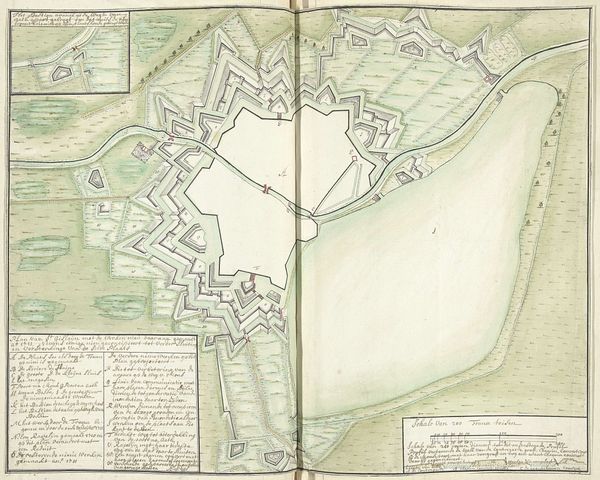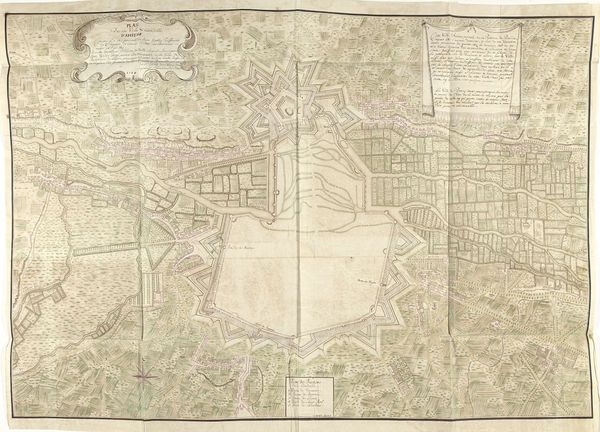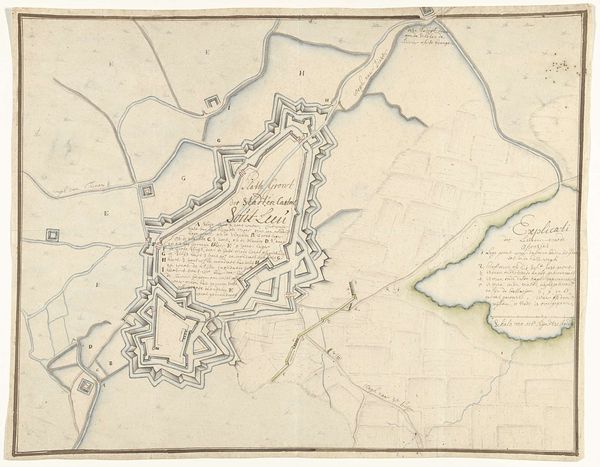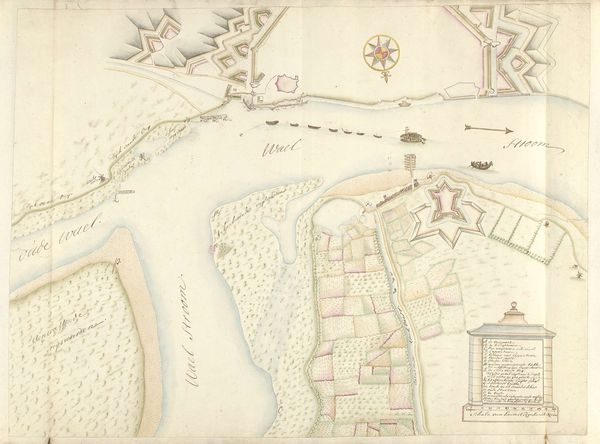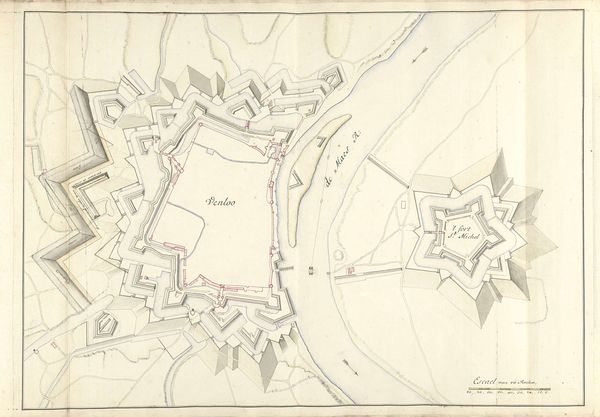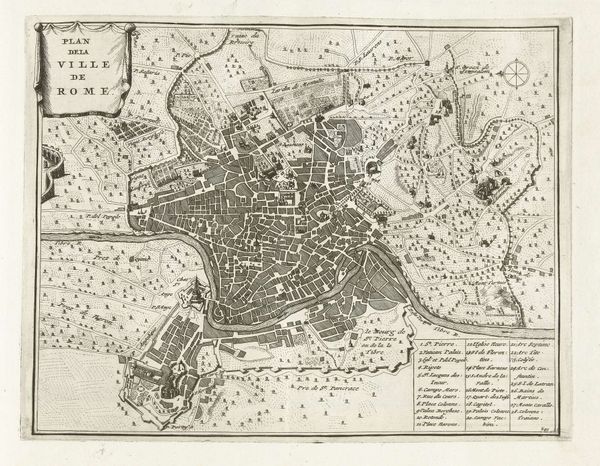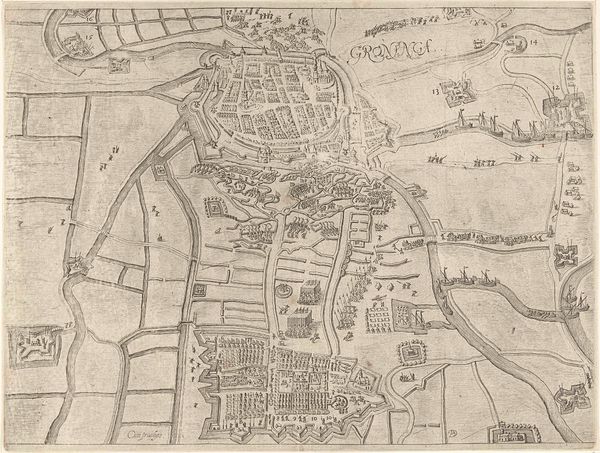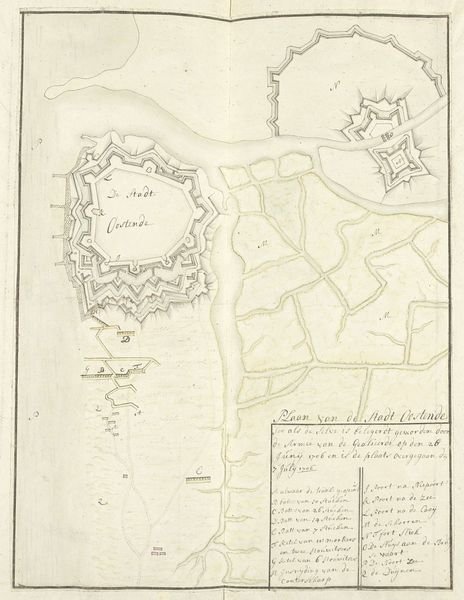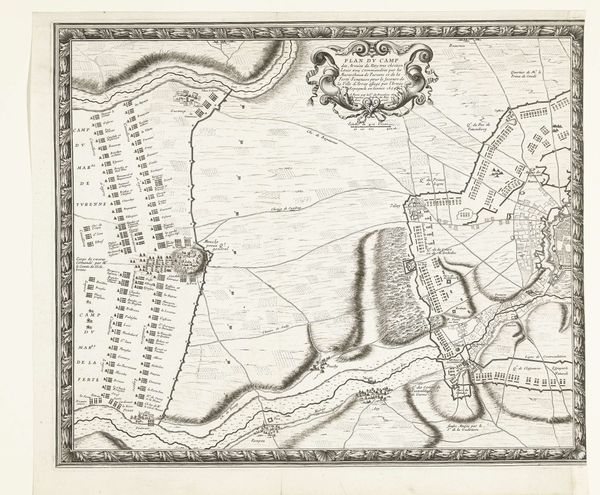
drawing, etching, paper, ink, architecture
#
drawing
#
baroque
#
etching
#
landscape
#
etching
#
paper
#
ink
#
architectural drawing
#
cityscape
#
architecture
Dimensions: height 538 mm, width 740 mm
Copyright: Rijks Museum: Open Domain
Curator: This detailed rendering is a map of Sluis, dating back to the period of 1701 to 1715, crafted by Samuel Du Ry de Champdoré using ink and etching on paper. Editor: My first thought? Impenetrable. The intricate fortifications wrapping the town like some elaborate exoskeleton, are so dominant. What was life *within* those walls, do you think? Curator: Knowing the socio-political climate of the Baroque period, these fortifications were likely vital. These were strategic assets for defense. Note the craftsmanship and labor it would take to build this. Consider the sheer effort put into the architectural plan alone! Each line, each angle perfectly calculated. It represents significant human exertion. Editor: Absolutely. But consider also the imagery embedded in such geometric precision. These star-shaped fortresses weren’t just functional; they projected power. The geometry speaks of rationality, control... a desire to impose order on a chaotic world. This resonates across many eras, you see this echoed throughout art of that time, especially architecture. Curator: And think about how that order translated into resource allocation. Building these required the organization of vast quantities of materials, a veritable army of labourers and supplies of everything that those people required. What sort of societal structures allowed this level of controlled effort? That is just the construction phase. Editor: I think that is where these structures carry so much weight symbolically! It embodies defense and speaks volumes of historical conflicts. This shape isn't accidental. The lines dictate how inhabitants saw themselves in times of conflict, creating and solidifying a culture around protection and strategic positioning. You can see just a touch of the culture inside those lines. Curator: Precisely! How were labor relations shaped by this constant state of perceived siege? Were ordinary people forced to dedicate labour or resources for defense? This drawing presents us an excellent picture, I am reminded to see beyond aesthetic appreciation toward to human experience of the age. Editor: Indeed, we find layered symbolic meanings as much as human activity involved in production when carefully interpreting. It enriches how we read such works. Curator: So true; both the practical, and the projected cultural influence! Editor: Exactly. It allows us to fully respect the complexities found in artwork that at first sight might just seem informational.
Comments
No comments
Be the first to comment and join the conversation on the ultimate creative platform.
